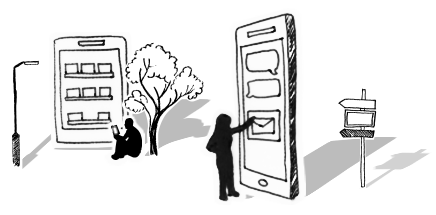




Change Methodology and Capability: 6Lever™ Change Readiness Assessment Insights
The next piece of Afiniti’s 6LeverTM change readiness assessment series explores the critical role capability and change methodology should play in your change journey.
Our previous insight covered the first two levers, change leadership and drivers, which are perhaps the most important initial areas to consider for your transformation. If you have defined the desired outcomes of your change and aligned leaders to them, it’s time to start considering your approach to change methodology and capability building.
When Afiniti assesses an organisation’s capability for change, we’re asking whether they possess and/or can develop the people, competencies and resources to function effectively in the future state; specifically, we’re focusing on the individuals impacted by and responsible for adopting the change.
Change methodology refers to how you take those individuals through the change, examining how their journeys are defined, initiated and communicated using proven processes.
Two requirements underpin both of these Levers: effective, engaging learning and a tailored approach.
People capability at the heart
There’s a reason one of our core values is putting people at the heart; it’s because, ultimately, organisations don’t change, people do.
Regardless of the type of change you’re undergoing, the only way to successfully deliver and embed it is if you can influence people to change at an individual level; without individual change, you’ll never achieve organisational change.
That principle should be kept front and centre in your change strategy and throughout your change journey, and this will help individuals to take ownership of their change. Even if everything else is planned and executed to perfection, if your people can’t or won’t do what they need to, the future state can’t be reached.
Often, individuals can interpret the change as just a slight extension of their day-to-day roles. Change leaders and sponsors must determine if capability needs deeper improvements so that the right people with the right skills are in the right place to achieve stated outcomes.
Therefore, it’s important to continually assess skill levels and requirements of the workforce. This needs to be done regularly, because as your organisation changes, so too will your skill and training requirements.
One size won’t fit all

Given you need to train your people at an individual level to enhance their (and consequently your organisation’s) capability for change, it should come as no shock that your different stakeholder groups will all learn in different ways and therefore have different training requirements (look up the VARK model for general learning styles).
Let’s look at a hypothetical drug development department being impacted by a regulatory change. One could generalise that this group’s academic background means they would respond well to technical text-based training, which is fairly straightforward to develop and roll out.
Now, let’s add a second group into the mix – the sales team responsible for getting the newly developed drugs to market, who also need to comply with this new regulation. They might not engage as much with in-depth technical training, whether because their learning styles don’t suit it or because they don’t need as much detail.
Suddenly, you have two groups who need two different training approaches. This is a major simplification because even the individual members in those two hypothetical groups will have their own learning preferences. And of course, in a major change, multiple departments and geographies will be impacted, so the various cultures and even languages will massively influence training requirements.
And it’s not just the type of training that varies by individual; it’s the timing of that training. A large transformation will probably have different phases of rollout, with different stakeholders impacted at each stage. There’s little point training Group B at the same time as Group A if the former won’t be affected by the change for another year. Information needs to be accessible at the right time, as well as in the right way, for different individuals.
We would refer to what’s required as a blended learning approach, which is the application of multiple learning styles, tools and platforms to cover all user needs.
Building capability may sound like a monster task, but this is why your change strategy needs to consider it.
Choosing the right change methodology
Effective change needs planning, implementation and analysis, and your method is the ‘how’ of your change; how will your organisation and your people bridge the gap between your current environment and skillsets to the desired future state?
There are many recognised change management methodologies to shape your approach – commonly used models include ADKAR, Lewin and Kotter. In the same way that one learning style will never fit all, you need to find the method that suits your change and your organisation.
Broadly, your method will guide you to carry out a number of steps that can be defined within projects or programmes to achieve your overall vision. Different methods will bring different approaches. For example, some encourage simultaneous completion of multiple steps to maintain cross-culture synergy, whereas others suggest all stakeholders should achieve a certain level of capability before the change moves onto its next stage.
Identifying the most suitable change methodology can lead you down a rabbit warren of jargon and academia, so this is an area where an objective change management specialist can genuinely add value.
Afiniti’s diverse team of consultants means we have access to experts in many methodologies, and part of our discovery work involves identifying the right one for each client’s specific organisation and requirements for a truly bespoke approach.
Irrespective of the one you end up applying, most recognised methods share one thing in common – the need for your people to feel involved in the change.

The dangers of assumption
Throughout this Insight, I’ve stressed the importance of focusing on the individual for capability and method, tailoring engagement as opposed to taking a blanket approach.
One of the most common issues we encounter, and something that often proceeds us being engaged to come in and course-correct the transformation, is change leaders/sponsors or project teams imparting what they think their audience needs to know, based on their own preferences. This leads to learning and communication that is inaccessible to a majority of the organisation, meaning the capability is unlikely to be fully built and, consequently, the change is unlikely to truly land.
Never assume you know everything about the impacted individuals. Involve representatives from all impacted roles in your planning to identify how they absorb information and how they want to be communicated with. Not only that, make sure you seek feedback on an ongoing basis and, just as importantly, be ready to respond to and act upon that feedback. Nothing disengages people more than making them feel they’re not being listened to.
Applying the measurement tactics laid out in your chosen change methodology or even using tools like Afiniti’s 6LeverTM change readiness assessment throughout a programme can be useful to validate your progress and help you adjust if your approach isn’t working.
I hope that’s given you some food for thought when it comes to the importance of building capability and choosing the right method for your change. Clearly, a lot of effort needs to go into each of these Levers, and the detail of how to enhance them goes beyond the scope of a single article.
Want to assess your organisation’s change capability and methods? You can take a sample of our change readiness assessment tool here. Or, if you would like to discuss these topics in any more detail, and specifically how they can drive your change, I’d welcome a conversation – please do get in touch.
To get the latest change tips, advice and guidance directly to your inbox, sign up to our monthly Business Change Digest.

